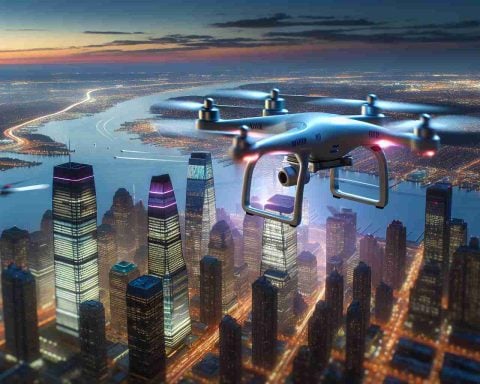The Dawn of Remote Medical Operations
In a pioneering achievement, China has successfully carried out the world’s first satellite-enabled remote surgeries, marking a remarkable advancement in medical technology. Utilizing the Apstar-6D communications satellite, positioned 36,000 kilometers above Earth, surgeons conducted five complex operations remotely, showcasing the potential to transform emergency medical care in challenging environments.
Surgeons from the People’s Liberation Army General Hospital managed to perform intricate procedures on patients located in Beijing while operating from various locations, including Lhasa, Dali, and Sanya. These groundbreaking surgeries focused on critical organs such as the liver, gallbladder, and pancreas. Remarkably, all patients experienced smooth recoveries and were discharged the following day.
During these innovative procedures, data transmission for each surgical movement covered an astounding round-trip distance of approximately 150,000 kilometers. This unprecedented feat highlights the capability of satellite technology in facilitating high-stakes medical interventions across vast distances.
The significance of this achievement extends beyond just surgery. It signifies a powerful integration of medical practices with cutting-edge technology, hinting at the future of trauma care in remote and rugged settings. Since its launch in 2020, the Apstar-6D satellite has been instrumental in enhancing connectivity across the Asia-Pacific region, promising a brighter future for healthcare delivery in critical situations.
Revolutionizing Healthcare: The Future of Satellite-Enabled Remote Surgeries
The Dawn of Remote Medical Operations
In a groundbreaking advancement, China has achieved a monumental milestone in healthcare by performing the world’s first satellite-enabled remote surgeries utilizing the Apstar-6D communications satellite. This innovation not only signifies a leap forward in medical technology but also opens avenues for emergency medical care in remote and challenging environments.
Advantages of Satellite-Enabled Remote Surgeries
1. Increased Accessibility: Satellite technology bridges the gap in healthcare accessibility for rural and remote areas, ensuring that patients can receive timely medical interventions regardless of their geographical location.
2. Expertise Utilization: Surgeons can leverage specialized skills from anywhere, making it possible for patients to benefit from high-level surgical expertise that may not be available locally.
3. Decreased Emergency Response Time: In critical situations, every minute counts. Remote surgeries can significantly reduce the time it takes for patients to receive care, which can be lifesaving in emergencies.
Innovations in Telemedicine
Remote surgeries present an innovative approach to telemedicine, utilizing high-speed data transmission to relay surgical movements over vast distances. The capabilities displayed during these surgeries—where data traveled an average round-trip distance of 150,000 kilometers—demonstrate the potential of combining healthcare with contemporary communication technologies.
Limitations and Challenges
Despite the successes, several challenges remain in the realm of remote surgeries:
– Technical Reliability: Any disruption in satellite communication could jeopardize the surgical process. Continuous improvements in network stability and data security are crucial.
– Skill Development: Training for local healthcare professionals is necessary to ensure they are equipped with the skills to prepare patients and support remote surgeries effectively.
– Infrastructure Requirements: Establishing the necessary infrastructural support for remote surgeries may require significant investment, particularly in underfunded healthcare systems.
Future Trends and Predictions
The success of these satellite-enabled remote surgeries may ignite further research and investments in satellite healthcare technologies worldwide. Experts predict that as technology advances, we may see:
– Expansion of Remote Surgical Capabilities: Over time, this service could evolve to include various medical procedures beyond surgeries, such as telehealth services and routine diagnoses.
– Global Collaborations: As nations recognize the benefits of remote care capabilities, collaborations across borders are likely to develop, promoting a broader exchange of medical expertise and technology.
– Sustainability in Healthcare Delivery: By minimizing the need for patient transportation, remote surgeries can enhance the sustainability of healthcare delivery in terms of reduced carbon emissions associated with travel.
Pricing and Market Analysis
The integration of satellite technology in healthcare is not without financial considerations. The cost of implementing such sophisticated systems can be substantial. However, as the technology matures and scales, pricing is expected to decrease, making remote surgical services more accessible to a wider population.
In conclusion, the successful implementation of satellite-enabled remote surgeries heralds a new era for medical operations, transforming how patients access critical care. For more information about innovations in healthcare technology, visit healthcare.com.



















